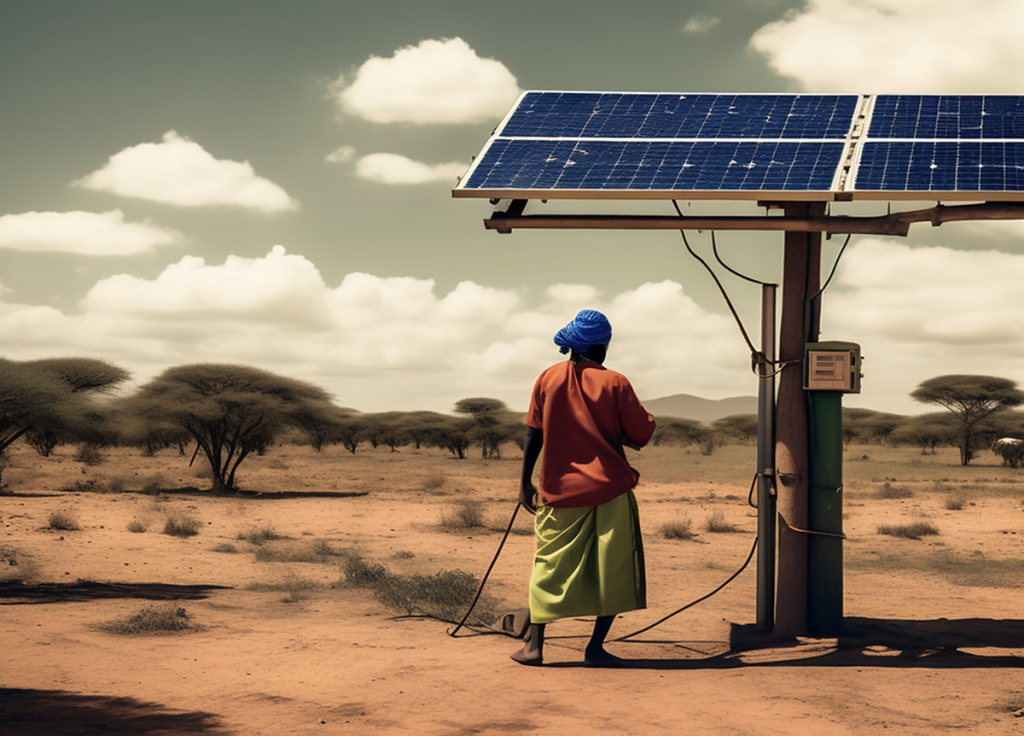For over four months, South Africans have been enjoying a substantial reprieve from ‘load shedding’ due to the surge in rooftop and large-scale solar installations across the country.
In its update on July 17th, 2024, National Utility firm Eskom announced that the country had experienced 114 consecutive days of uninterrupted power supply, marking the longest break in nearly four years.
According to a new report by the country’s solar energy company, Gosolr, South Africa installed approximately 590MW of rooftop solar capacity in the first half of 2024, with an additional 350MW added in the year’s second quarter.
The total installed rooftop solar capacity in South Africa has now reached around 5,790MW, representing well over 10% of the country’s total installed generation capacity. The majority were installed in the past two years.
Gosolr, in its quarterly light paper report, noted that the growth of solar in South Africa, initially propelled solely by the need to mitigate the impact of load shedding, is now being influenced by other factors, with the cost of accessing power being a significant driver.
“Amid an ongoing hiatus in load shedding, cost considerations are emerging as the next major driver of solar installations,” said the report.
The report’s authors cite that while the cost of electricity from the grid continues to increase rapidly, the price of solar power paired with batteries continues to decline as the technologies improve and supply increases.
“Importantly, we have now crossed a critical threshold: Many solar subscription offerings – which expand access to the technology by shielding homeowners from upfront installation expenses – now deliver net savings for consumers in several of South Africa’s major cities,” explains the report.
In November 2023, Eskom unveiled the first and most extensive Battery Energy Storage System (BESS) project in South Africa and Africa, a sign that it is serious about its commitment to renewable energy despite the country’s huge, cheap coal reserves.
“Through BESS, Eskom aspires to a low-carbon future, especially as these technologies become cheaper and cheaper,” said Gosolr.
The report predicts that while Eskom’s electricity costs may increase by about 50% over the next three years, the price of subscription solar packages will only increase by around 13%, making the latter the cheapest option.
South Africa’s solar revolution is not only happening in isolation, however. Homeowners and businesses across Africa are also switching to solar energy, ushering in a new era of power dynamics on the continent.
The latest update from the solar trade organisation, Africa Solar Industry Association (AFSIA), shows that the continent is also witnessing a surge in large-scale solar power projects.
According to AFSIA, new capacity installed for utility-scale projects is surging. In the first seven months of 2024, 1.1+ GWp of utility-scale projects were commissioned across Africa, almost double the amount installed in 2023.
“Simultaneously, a sharp decrease of C&I (commerce and industry) is being witnessed, thereby putting utility-scale solar back to the #1 in terms of largest segment in the African solar space,” according to the report.
By August 2024, 15 utility-scale projects had already been commissioned, the most notable of which were Kenhardt 1-2-3 in South Africa, Kom Ombo in Egypt, and Itimpi in Zambia.
The Kenhardt project has a solar capacity of 540 MW and 1.1 GWh of storage capacity. It is considered one of the largest hybrid power projects globally, comprising one million solar panels and a battery facility of 456 units.
“In our Q1 update, we clarified that sunlight is one of South Africa’s most abundant but still underutilised resources. This is set to change, not only with the increased adoption of residential and commercial rooftop solar solutions but also with the construction of several massive projects,” said Gosolr Light paper.
In July, Saudi-listed ACWA Power received a commercial operation certificate for its 200 megawatt (MW) Kom Ombo solar photovoltaic (PV) plant in Egypt, valued at US$163 million.
In April, Zambia commissioned the US$53 million, 60-megawatt Itimpi Solar Photovoltaic Power Station with an annual generation capacity of 130 GWh.
Tunisia is also becoming a hot spot in the African utility-scale market. In early August, renewable energy firm Scatec and Toyota Tshusho’s joint venture to promote renewable energy business in Africa, Aeolus, announced the financial close of a 60MW solar project in Tunisia.
Credit: Conrad Onyango, bird story agency

